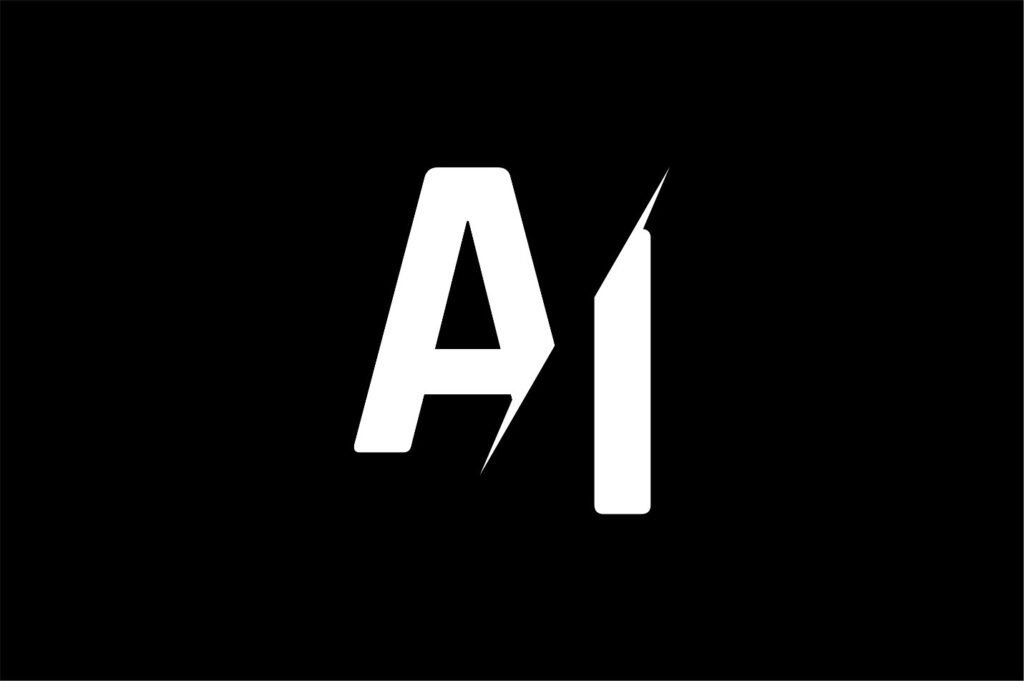EPR speaks to Henry Levy, President, Life Sciences at Clarivate to gain a sense of
how artificial intelligence (AI), and particularly Generative AI (GenAI), is
transforming the pharmaceutical industry.
A recent survey from the Pistoia Alliance revealed that AI and machine learning (ML)
will be the top technology investment for 60 percent of life sciences companies over
the next two years.1
ith this increased focus on AI/ML, EPR editor Caroline Peachey sat down with Henry
Levy, President of Life Sciences at Clarivate, to discuss the status, challenges and
use cases for AI/ML in the pharmaceutical industry.
Levy is a leading life sciences expert who has published multiple articles on drug
development and technology trends. Prior to joining Clarivate, Levy held several
roles in the pharmaceutical industry, including at Veeva Systems, Pharmaceutical
Product Development (PPD) and Accenture.
Use of artificial intelligence (AI) and machine learning (ML) in pharma
“AI/ML is in most technologies, and in most pharmaceutical companies,” Levy explains.
From the outset he is sure to distinguish between ‘conventional’ artificial intelligence/machine learning, which has been around for seven to 10 years, and generative AI. With the emergence of ChatGPT, GenAI has rapidly gained prominence in the last 12 months and is increasingly being recognised for its potential to accelerate and enhance drug discovery.
Generative AI changes the dynamic in two ways: by escalating the level of automation possible and increasing the potential for innovation.
In the regulatory space, Levy explains that AI/ML is already used to pre-populate submissions to the authorities, for example, by pre-filling set fields. GenAI could take this to another level with the ability to generate “probably 95 percent” of that content. With proper oversight, GenAI has potential to drive efficiencies and cut the time needed for a regulatory submission, Levy says.
There is also scope for innovating new drugs, but that is further off, according to Levy. “I think in five to 10 years, the intelligence level will get to a point where GenAI can actually contribute to actual innovation in the development of drugs,” Levy reflects. “Even though a lot of companies are trying to apply AI or GenAI to potentially designing and adjusting a molecule, I do not think GenAI does the work, but it can help accelerate it.”
Overcoming key AI challenges: regulation, cost and beyond
Regulatory acceptance is a ‘core challenge,’ of implementing AI in the pharmaceutical environment. Regulators are working on defining regulations and guidelines for AI usage while also exploring AI applications internally. From a regulatory perspective, Levy says that none of the authorities have answered fundamental questions related to submission of a filing containing AI eg, What type of testing needs to be done? What type of evidence needs to be in the filing? These are all questions to answer, he says.
Another barrier to AI is – unsurprisingly – cost.
“GenAI sounds awesome… but if you want to have something that works in this specific space, the costs today are high,” Levy notes. However, as with any technology these cost barriers should subside over time.
Hallucinations – the generation of outputs that may sound plausible but are either factually incorrect or unrelated to the given context – is an additional factor to consider. However, Levy believes that this is more of a fear than a reality for the pharma industry.
“In the pharmaceutical industry, the way that we will do things, those hallucinations should be significantly minimised,” Levy explains.
“Nobody in the pharmaceutical industry is saying that they want to [use AI] independent of humans. They are not going to take the outcome of an AI algorithm and put that into a patient.
“So, I feel that it is more fear than reality. But there are some realities [of hallucinations], and you must deal with that.”
Use cases for GenAI in pharma
Although there could be ‘infinite’ applications for AI in pharma, the most important ones are in research and discovery space “where the math is about getting rid of hundreds of 1000s of options down to the five to 10 that you want to put into a human,” Levy says.
“If you can take that process and significantly shorten it by, in essence, predicting and designing a molecule that has a higher percentage of success, that would be transformational.”
However, Levy stresses that the results will not be known until “maybe four to six years” from now.
GenAI could help in the design of more effective clinical trials, as well as for identifying patients by looking at real world data. “Patient recruitment is the hardest part of the process, so if you can accelerate that it would be amazing,” Levy says.
Looking at focus areas for AI, Levy continues: “I think the next three to five years is about efficiency and a little bit of speed. I think five to 10 years from now, it has the potential to be innovation – and once you get there, wow!”
AI applications
here are many activities that are done that are not generative in nature. Conventional AI/ML, depending on the activity, can be used for automation.
Levy gives the example of clinical data management whereby physicians enter information about a clinical trial. In these cases, AI can be used to identify mistakes/discrepancies in data and notify the physician. Using AI and ML to create some simple algorithms can help in automating the process to connect clinical trial data.
Looking to the future
“For the first time in a long time, the pharmaceutical industry is actually taking adoption of an IT innovation incredibly seriously,” Levy asserts. “I do not think they are that far. Of course, it is a big industry and there are laggards and leaders.”
All the pharma companies Levy’s working with are investing deeply in AI and pushing their organisations and partners to be as aggressive as possible. One sector that is not as advanced is perhaps biotech, as these organisations tend to be risk averse on the long term to ensure the short term, he says.
Summarising his views, which he calls ‘optimistic’ Levy says: “I want to repeat the fact that AI is not a replacement for humans, for scientists or for science.”
“The human body has not been able to be mapped to the level that you know exactly what it is going to do… Therefore, I do not think that GenAI will cure cancer. But it might accelerate some cures in some areas of cancer because the human body will evolve [and] will adjust.”
He concludes: “I am excited, I think the industry is excited and I think we should all be very serious about AI. But science is still going to be incredibly necessary and valuable, and scientists are going to be credited.”
About the interviewee
Henry Levy is the President of Life Sciences at Clarivate. He has over 25 years of experience in life sciences. Prior to Clarivate, Henry held several roles at Veeva Systems, including Chief Strategy Officer, General Manager for the Clinical Data Management product suite and, most recently, President, Global R&D and Quality.
Previously, he was Chief Commercial Officer for Pharmaceutical Product Development (PPD), where he defined new models for biopharmaceutical companies to partner with contract research organisations (CROs) to drive down costs and improve the speed of drug development. Before that, he led Accenture’s global life sciences R&D practice.
GenAI in pharma: where are we today? (europeanpharmaceuticalreview.com)
NHS trials artificial intelligence system to prevent avoidable admissions by Jen Brogan | 17th Nov 2023 | News

The AI system will identify those most at risk and reduce pressure on the NHS
The NHS has announced that it is trialling an artificial intelligence (AI) system to help boost NHS winter responses and prevent avoidable admissions to hospitals.
The system will help identify patients most at risk, reduce pressure on A&Es and prioritise patients most in need.
Four GP practices in Somerset are currently trialling the AI system, which identifies patients with complex health needs, those at risk of hospital admission or who rarely contact their GP.
Health coaches, nurses and GPs will contact those most at risk to provide several preventative care options, including offering vulnerable patients food parcels, escalating care to specialist doctors, providing support to prevent falls, or providing access to local voluntary groups to help avoid loneliness.
Patients can decide whether they want to benefit from these options.
The new approach follows recent data, which portrays the significant pressure that the NHS is currently facing as it heads into the winter period.
The data showed that October was the busiest on record for A&E departments and ambulance services.
So far, in Buckinghamshire, the NHS has been using AI linked to electronic sensors on kettles and fridges to monitor patients’ eating and drinking habits, which involve a non-clinical
Onward Care team who speak to patients, solving 95% of their issues or escalating anything clinical.
Additionally, NHS teams in Birmingham have been piloting an algorithm to predict the top 5% at risk of potential hospital attendances and admissions to prevent 4,500 unnecessary A&E visits, 17,000 overnight hospital stays and free up around 23,000 GP appointments over the next two years.
NHS England director of system transformation, Matt Neligan, said: “Using joined-up data across integrated care systems gives us a much deeper insight into the full range of needs for different population groups and the drivers of health inequalities.” Neligan added that by using tools and techniques like AI and a population health management approach, the NHS is “increasingly able to find those individuals early and offer targeted, preventative and personalised healthcare”.
NHS trials artificial intelligence system to prevent avoidable admissions – PharmaTimes
A Word on Generative AI
The previous year has been all about Generative AI, and it is important to explore the role that the adoption of this technology is likely to have on regulatory worker augmentation.
Although in its early stages, the expectations are significant. Generative AI will greatly augment the regulatory profession by expediting data mining, analytics, software operations, and content creation. By enhancing these functions, AI can reduce the burden on people and elevate the speed and precision of strategic risk assessments, predictive analyses of regulatory outcomes, and engagements with health authorities.
Integrated Solutions
Integrated platforms that can streamline and consolidate processes from various internal and external regulatory intelligence sources should be considered a priority. Beyond regulatory intelligence gathering, an augmented approach benefits the publishing workflow in regulatory affairs. These solutions and their advanced automation capabilities can, for example, significantly improve the efficiency of manual bookmarking and hyperlinking in this process.
Of course, not all regulatory functions will be equally or immediately suitable for automation. Workflows requiring specialized regulatory, therapeutic area, or product program management expertise will be impacted last. There remains a critical role for local regulatory expertise and specific knowledge in therapeutic areas demanding dedicated focus and resource allocation.
Future Is a Collaborative Evolution
Embracing the automation of regulatory functions that support process streamlining and acceleration, pharmaceutical companies must anticipate changes affecting culture, processes, worker skill sets, and partnership strategies. To ensure a seamless transformation, organizations must comprehensively understand change management and clearly outline the proactive steps to be taken.
A culture that embraces augmented workers demands transparency, awareness, and an openness to technology and innovation. The emphasis must be on supporting rather than replacing, and overcoming historical hesitations in regulatory affairs technology is crucial, as is embracing imperfections in the iterative development process. Ongoing discussions and refinements are key to producing ‘technology champions.’ Understanding how vendors and providers contribute to these goals is also pivotal, requiring alignment with organizational strategy.
From a pharmaceutical regulatory affairs perspective, automation and worker augmentation can drive important benefits such as enhanced compliance and data integrity, increased efficiency, and greater productivity.
Automation can complement human expertise. AI-powered tools can help analyze complex data and provide insights that humans might miss, leading to better regulatory decisions. What tools has your organization adapted to streamline the workflow? Let us know on FacebookOpens a new window , XOpens a new window , and LinkedInOpens a new window . We’d love to hear from you!
The Impact of AI and ML on Pharmaceutical Regulatory Workers – Spiceworks








